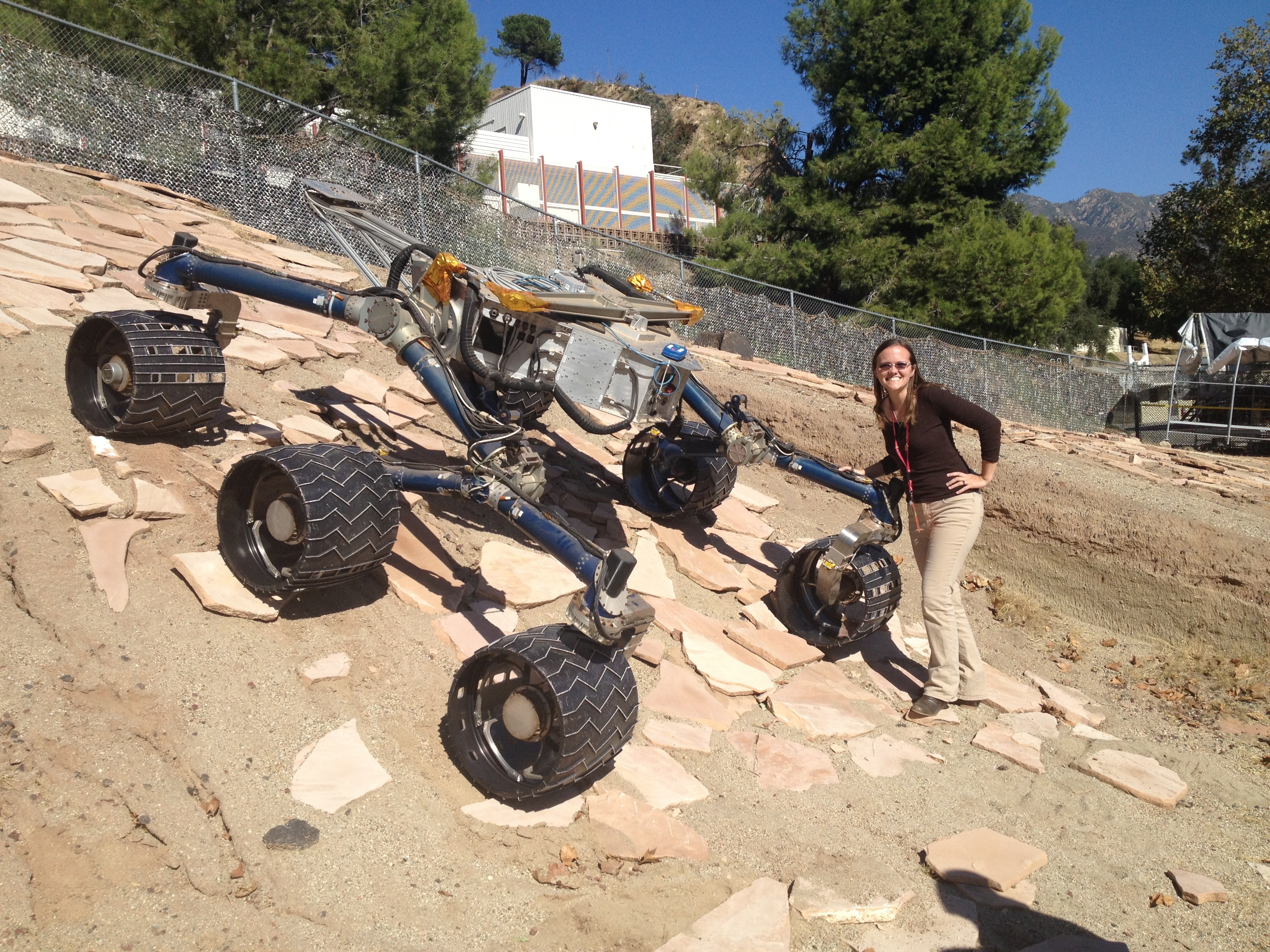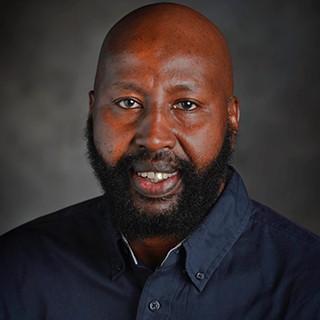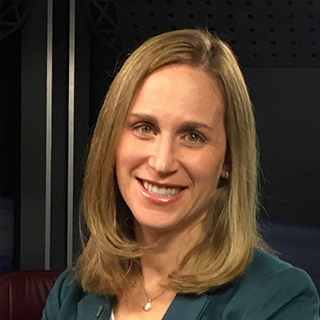People
Keri Bean
Engineer
Private Industry

Keri joined a private space company in 2023.
Where are you from?
I was born in Fairfax, Virginia. However, I consider Schertz, Texas to be my hometown. I am now living in Pasadena, California.
Describe the first time you made a personal connection with outer space.
Ever since I was a little kid, weather has been my main interest.
As a kid, I did have an interest in space and I did have my own telescope. However, I think the real defining and turning point for me in my space awareness was actually the Columbia disaster in 2003.
This tragic event took place when I was in 8th grade and at a University Interscholastic League academic competition through the University of Texas at Austin. The teachers brought everyone into the cafeteria and told us that the shuttle didn't make it home. I remember thinking to myself: We have people in space? What are they doing there? Why didn't I know that? So, I started reading more about space.
In July 2005, I saw STS-114 launch (the return flight after Columbia) and that made me really interested in human spaceflight. I went on to attend Space Camp in Huntsville, Alabama during the summers of 2006 and 2007.
All of these experiences combined really made me want to work in the space program.
My first real exposure with planetary science and robotic space missions was actually at Space Camp when we watched the Roving Mars movie in the IMAX theatre. I was completely entranced by the whole movie. Everyone in the movie was so invested in the rovers and I gained immense respect for the rover team.
If you're like me and everything sounds interesting, then go and do those things. Take classes outside of your major, go on field expeditions, etc. That's how you'll learn more about what you like and what you don't like.
How did you end up working in the space program?
As I already mentioned, my passion is weather. It was difficult for me to reconcile my love of weather and my new-found love for space; that is until I was looking into schools in Texas and selecting my major.
Texas A&M seemed like a good fit for me since they have a good meteorology undergraduate program. I wore a NASA hoodie on one of my visits to A&M, and one of the professors there connected me with Dr. Mark Lemmon who studies the weather on Mars. That's when things clicked and I could combine my interests by studying the weather on other planets. It was the perfect combination of my two major interests.
I worked with Dr. Lemmon for six years as I was completing my bachelor's and later my master's in meteorology. Dr. Lemmon also introduced me to and involved me in mission operations and data analysis. While a student, I worked on the Phoenix Mars Lander, the Mars Exploration Rovers (Spirit and Opportunity), and the Mars Science Laboratory Curiosity rover. I also worked with some Hubble data while working for Dr. Lucas Marci in the astronomy department at A&M.
Besides this, I was very much involved in the Students for the Exploration and Development of Space at A&M and was an officer for many years. Our group entered two NASA competitions related to developing ideas for the human spaceflight program. I really enjoyed the proposal process and getting to think outside the box. It was also an introduction to the engineering process for me.
I started as an employee at NASA's Jet Propulsion Laboratory (JPL) in August 2013, and in that time frame I have met so many amazing people. Everyone has such varied backgrounds, yet we're all united in our passion for space exploration. My hope is that I too will have an amazing career at JPL.
Who inspired you?
The first inspiration was of course my parents, who never forced me to play with girly things and let me play with a microscope, and such, instead. They also put up with me either demanding to watch Disney movies or The Weather Channel for pretty much my entire childhood, so kudos to them for surviving that and letting me learn about the weather.
Next would be my advisor from Texas A&M, Dr. Mark Lemmon. I simply wouldn't be where I am right now if he hadn't been my mentor. He gave me so many great opportunities while I was in school that led directly to my working for NASA's Jet Propulsion Laboratory (JPL).
There's also a whole string of great teachers I've had along the way, but I won't attempt to name them because I know I'll forget one that should be mentioned. I'm fairly certain those teachers already know who they are anyway.
I have met so many extraordinary women. I'm still surprised that most of my management and much of the science planners at JPL are women. It is certainly refreshing to be surrounded by so many amazing women, especially since it is common to hear about the lack of women in STEM (Science, Technology, Engineering and Math).
Tell us about your JPL job as a Science Planner.
Science planning is a great job and is a hybrid between science and engineering. It also involves a lot of communication. I'm an extremely social person -- I like to talk to any- and everyone -- so this was a wonderful fit for my personality and my interests. Science planners take information from the science team regarding the type of science they would like to conduct and then develop the observations in order to obtain the science. Depending on the mission, the science planners also do a lot of the sequencing and writing the code that is sent to the spacecraft.
When I worked on the Mars missions, science planning was a very quick and a constantly changing thing. Each day, we planned only one to three days in advance -- it can get quite crazy.
On Curiosity, I did science planning for the environment theme group, which focused on the atmosphere and the environment around the rover. I mostly used the cameras, but also planned for some of the other atmospheric themed instruments. Nowadays, I am working on the Dawn mission (a mission within the asteroid belt to dwarf Ceres) and the science planning process is essentially the same, but very stretched out. On this mission, we planned weeks at a time and months in advance.
Most of my work on the Dawn mission was writing the instrument and science sequences that go to the spacecraft. The sequences operate the instruments and the spacecraft to be able to do the science observations. There's a lot involved in writing just that little bit of code. The sequences have to be written, then run by other programs, then also checked in our testbed. We had some computers and spare models of the instruments that we use to simulate Dawn, since it's a lot better to fix problems here on the ground than in space.
Tell us about a favorite moment so far in your career.
I think my favorite moment was when Phoenix successfully landed on Mars. It was exactly one year to the day from when I graduated high school, and yet there I was in the Science Operations Center at the University of Arizona. As the images came down from the spacecraft, I put them up onto the screens for the rest of the scientists to see. I couldn't believe that I was involved in space missions so early on in college.
What advice would you give to someone who wants to take the same career path as you?
Science planning is really mostly about communication. Learn to be clear and concise in speaking. Be careful with that words you use and the connotations behind them.
To be a science planner, you need a technical background in either science or engineering. The specific field doesn't really matter. It can be anything from biology to meteorology to aerospace engineering. Some of the applicable skills found in these majors are learning how to research and understand a topic without having it taught to you, communicating technical topics, and being able to write code. The specific coding language isn't important, but the logic and mindset coding takes is important to develop. Once you know one language, it's very easy to learn others.
What do you do for fun?
I spend a lot of time reading. It used to mostly be books, and now it's mostly articles online. I also like to play board games and spend time with friends. When I can, I like to go hiking and to the beach.
I also love dancing, everything from salsa, to swing, to contra dancing. I took some lessons from the Aggie Wranglers, so I can do some acrobatic country moves too.
If you were talking to a student interested in science and math or engineering, what advice would you give them?
If you're like me and everything sounds interesting, then go and do those things. Take classes outside of your major, go on field expeditions, etc. That's how you'll learn more about what you like and what you don't like. One of the reasons I chose to minor in Earth science was because I had some interest in geology and also wanted to take planetary geology. I also took an oceanography class just because I was interested in it. I signed up for a geophysics field expedition on a whim and spent a few weeks in Wyoming deploying seismometers and getting geologic tours of that area of the United States.
If you hear of a professor at your school, or even elsewhere, that is doing work you're interested in, send them an email or stop by their office. I very rarely encounter someone who isn't interested in talking about his or her work. And who knows, maybe you can work with them on a project while still in school.
If you have the time, take as many dual credit or AP/IB classes in high school as possible. They can help free up your college time to pursue those different classes you're interested in.




